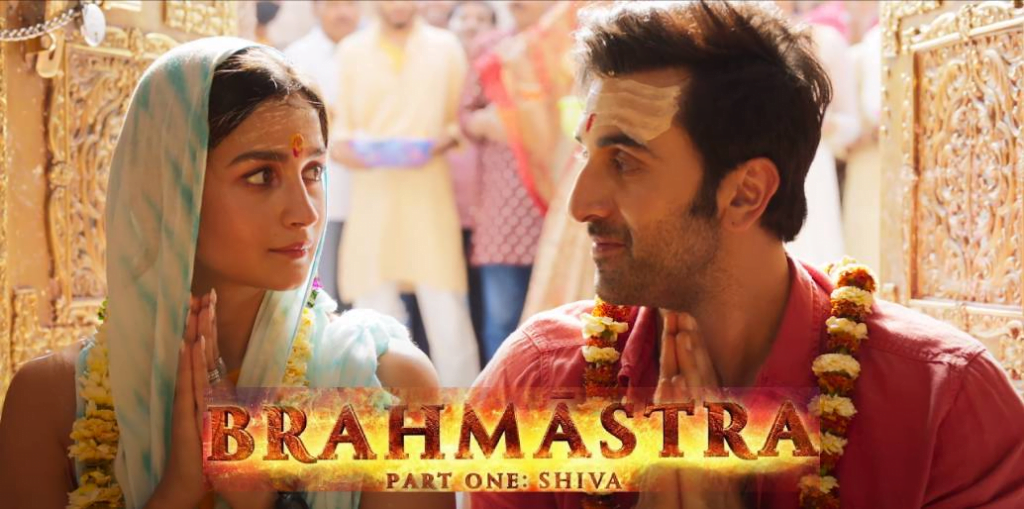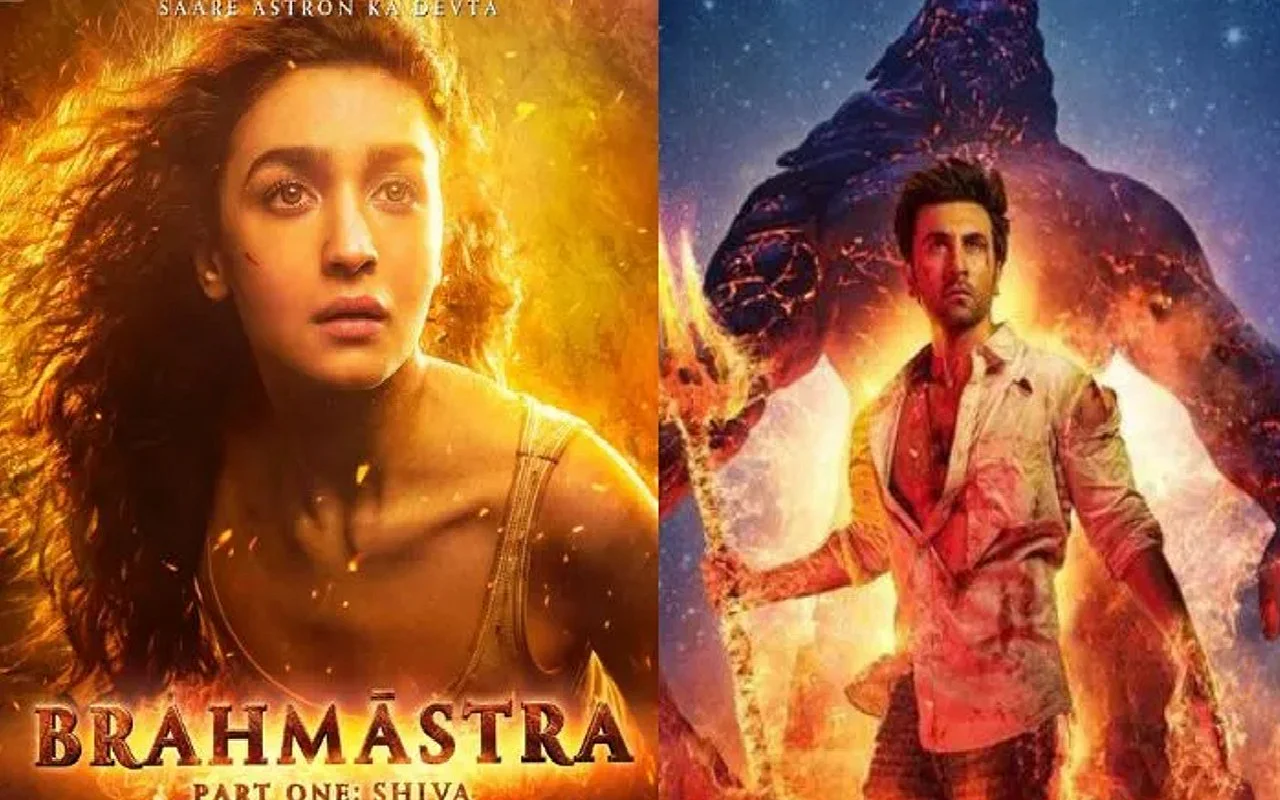Spoiler alert: This article contains plot points and spoilers
The much-awaited film of the year, or perhaps the decade, Brahmastra- Part One: Shiva was finally released last week. The glamour-packed star cast, beyond imaginable VFX, and mythological fictional universe of the film have made a huge box office impact.
But the movie which took eight years to come through fails to stand on its mighty claims. The director Ayan Mukherjee rightly says that the kind and nature of the VFX done in this film has never been done in Bollywood before. However, the problem is not the way Brahmastra is delivered per se, but in the way, the characters are represented, especially the female lead- Alia Bhatt.
The movie starts with a special appearance by Sharukh Khan as the ‘scientist’ who knows a secret that has the power to destroy the universe- the Brahmastra. The villain Mouni Roy aka Junoon, along with her two aides is determined to know the secret that she successfully does halfway through the movie.
In Brahmastra, Alia Bhatt portrays a fragile, submissive woman who simply follows the man wherever he goes. Like other female archetypes in Bollywood, she is assigned the duty-bound role to show unwavering faith in the male lead and give in to his whims. Brahmastra glorifies this as love. This packaging of love as ‘self-sacrifice’ on the part of a woman alone is sexist, to say the least
The characters are introduced in the “typical Bollywood fashion” with boisterous background music and the camera moving up and down until it zooms out to reveal the frame of the person. The male lead- Ranbir Kapoor aka Deejay Shiva, is a lower-middle-class boy whose upbeat energy makes both the young and the old groove at Durga-puja pandals.
He meets Isha, played by Alia Bhatt, and instantly falls in love with her. In their very next meeting (mind you, they have never spoken before) Shiva creepily follows Isha outside the club where he is at for work, flirts his way through, and asks her to go with him to an ‘unknown place’ where he is supposed to be before midnight.
She willingly agrees and convinces her “high-class” friends to join as well. Bollywood tries hard yet again to make the privileged class – oppressed class division a major hurdle in this one scene while conveniently sidelining intersectionalities as the movie proceeds.

It is revealed that Shiva is an orphan who struggles to make ends meet. Brahmastra then takes a serious turn to Shiva telling Isha his backstory. The character’s story, though important in the latter half of the movie, seems forced so the audience can root for him as the superhero-in-the- making. This is where the problem with Brahmastra begins.
Isha, a London-bred, privileged class girl, is swayed by Shiva who asks her: “Mujh par Bharosa karti ho, Isha?” (Do you trust me, Isha?). She blindly trusts him over and over, without a second thought. She leaves everything, her aspirations, and her own life based on Shiva’s partial dream-like vision. She follows him, a man she has met not even a week ago to Varanasi and the Himalayas (Why? Perhaps, she is expected to do so as the love interest!).
Also read: 7 Feminist Movies Of The Decade To Binge-Watch These Holidays
In Brahmastra, Alia Bhatt portrays a fragile, submissive woman who simply follows the man wherever he goes. Like other female archetypes in Bollywood, she is assigned the duty-bound role to show unwavering faith in the male lead and give in to his whims. Brahmastra glorifies this as love. This packaging of love as ‘self-sacrifice’ on the part of a woman alone is sexist, to say the least.
Isha’s dialogues are without any substance. She either repeats what Shiva has already said, or conveys her agreement to whatever he says or does. What is even more obnoxious is that her character adds no value or depth to the film.
Isha barely grows as the story proceeds, unlike Shiva’s character who faces his fears and overcomes them by the end of the movie. In simple words, she is reduced to being merely a love interest of the protagonist, to compliment him, and to prove the point of the story- that love can conquer darkness. Isha is nothing more than Shiva’s muse.

Brahmastra is jam-packed with action scenes, yet neither of the female leads Junoon or Isha appear in any. They simply stand as showpieces who witness all the activities performed by men, filmed as a spectacle. Isha is just another ‘damsel in distress’ who screams “Shiva” every time she is in danger. Isha seems to be in the movie only to introduce Shiva to his powers while he saves her from the villains quite many times.
Representation of women in Hindi cinema as mere decorations and accessories is typified in Isha- the “ideal love interest” of Shiva. She is the girl next door lover who packs her bags the moment the hero “discusses” his visions of abandoning everything
Brahmastra is extremely slow-paced in the first half. It gets hard after a while to keep count of the number of astras or how many times the movie reaches a climactic point only to be dampened with over-the-top dialogues.
Post intermission, the villains leave no stone unturned to steal the broken parts of the Brahmastra. The climax of the movie ends with Shiva leaping ravaged lands to save his lover only for the latter to reply modestly, “Why did you save me Shiva? Save yourself!” (The sacrificing love of a woman, alas!) Nevertheless, Shiva realises his full potential to become the agni astra himself that his love for Isha has made possible to access.

Brahmastra is sold to the audience as this amazing love story in the ‘Astraverse’ but Shiva is the center of this movie. Brahmastra is about the quest of the superhero. The soul of Brahmastra is Shiva alone, contrary to what the creators of the movie say about the love story within it.
It is safe to say that the character of Isha was written only to accompany the male lead in his travels for his own purpose. It is his story, his life that Isha is just a part of with little to no control or say in her own story.
Representation of women in Hindi cinema as mere decorations and accessories is typified in Isha- the “ideal love interest” of Shiva. She is the girl next door lover who packs her bags the moment the hero “discusses” his visions of abandoning everything.
Isha becomes the agyakari lover who has no mind of her own. Indeed, Brahmastra is a story that talks about the power of love in problematic ways but it is certainly not a love story between two equal characters.
Also read: 4 South Indian Movies That Start A Conversation About Caste
Sanjana is a Research Scholar at the Centre for Political Studies, Jawaharlal Nehru University. She has a keen interest in studying political mobilisation in India. She is also interested in the themes of mental health, and gender and more recently exploring the overlaps between politics and popular culture. She has contributed interesting articles as a guest writer that have featured in FII before. She can be found on Facebook, LinkedIn, and Instagram.




